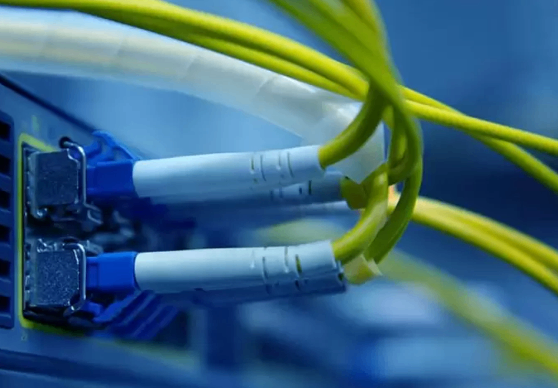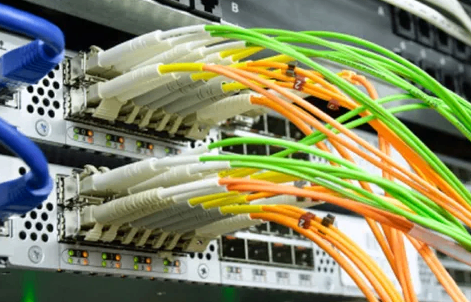Oufu Optical Fiber Cable Co.,Ltd
Address: Shenyang, Liaoning, China
Contact person: Manager Zhang
Phone: 400-964-1314
Mobile phone: +86 13904053308
【whatsapp && wechat】
2024-03-29 3796
Introduction to Multimode Fiber
Multimode fiber, a crucial component of fiber optic communication systems, finds widespread application in various networking scenarios. This article aims to provide a basic understanding of multimode fiber, its working principles, and its role in modern communication networks.
Multimode fiber, as opposed to single-mode fiber, supports the transmission of multiple light modes or paths within its core. This characteristic allows for higher coupling efficiency and easier alignment, making multimode fiber a cost-effective choice for shorter distances, such as within buildings or campuses.
The core diameter of multimode fiber, typically 50μm or 62.5μm, is larger than that of single-mode fiber, enabling the propagation of multiple modes without significant modal dispersion. However, as the signal travels along the fiber, modal dispersion occurs, leading to a broadening of the pulse and limiting the bandwidth and transmission distance.

Despite these limitations, multimode fiber remains a popular choice for many applications due to its ease of use and cost-effectiveness. It is commonly used in local area networks (LANs), data centers, and other short-distance communication systems.
Moreover, with advancements in fiber optic technology, newer types of multimode fiber, such as OM3 and OM4, have been developed to offer higher bandwidth and transmission speeds. These fibers are optimized for high-speed data transmission and are increasingly being deployed in data centers and other high-bandwidth applications.
In conclusion, multimode fiber plays a crucial role in fiber optic communication systems, particularly for shorter distances. Its cost-effectiveness and ease of use make it a popular choice for various networking scenarios. With continued advancements in technology, multimode fiber will continue to evolve and play an increasingly important role in future communication networks.
Applications of Multimode Fiber
Multimode fiber, with its unique properties and advantages, finds widespread application in a range of communication scenarios. This article explores some of the key applications of multimode fiber and how it contributes to efficient and reliable data transmission.
One of the primary applications of multimode fiber is in local area networks (LANs). Within buildings or campuses, multimode fiber is often used to connect various devices and systems, enabling high-speed data transmission and communication. Its cost-effectiveness and ease of installation make it a practical choice for these short-distance networks.
Another significant application is in data centers. Data centers require high-bandwidth and low-latency connections to support the large volumes of data being processed and stored. Multimode fiber, especially the newer OM3 and OM4 types, offers the necessary bandwidth and transmission speeds to meet these demands. It is commonly used in data center infrastructure to connect servers, storage systems, and other networking equipment.www.adsscable.cn
Furthermore, multimode fiber is also used in video transmission applications, such as HD video surveillance systems and multimedia distribution. Its ability to handle high-bandwidth video signals efficiently makes it a suitable choice for these purposes.

In addition to these applications, multimode fiber is also finding its way into industrial automation systems, sensor networks, and other specialized communication scenarios. Its durability and resistance to electromagnetic interference make it a reliable choice for these environments.
In summary, multimode fiber has diverse applications across various communication scenarios. Its cost-effectiveness, ease of use, and high-bandwidth capabilities make it a valuable asset in modern communication networks. As technology continues to evolve, we can expect to see even more innovative applications of multimode fiber in the future.
Future Trends in Multimode Fiber Technology
Multimode fiber technology has come a long way, and with continued advancements in fiber optic communication systems, its future looks even more promising. This article explores some of the emerging trends and innovations in multimode fiber technology.

One of the significant trends is the development of new fiber standards and specifications. As data transmission speeds and bandwidth requirements continue to increase, the need for more advanced fiber types arises. We can expect to see new multimode fiber standards that offer higher bandwidth, lower loss, and reduced modal dispersion, enabling even more efficient and reliable data transmission.
Another trend is the integration of multimode fiber with other technologies, such as wireless communication and sensor networks. The convergence of these technologies is leading to the development of smart networks that can handle diverse communication needs. Multimode fiber, with its high-bandwidth capabilities, plays a crucial role in supporting these advanced networks.
Furthermore, the emergence of new network architectures and protocols, such as Software-Defined Networking (SDN) and Network Function Virtualization (NFV), is driving the need for more flexible and scalable fiber optic solutions. Multimode fiber, with its ability to support high-density connections and easy scalability, is well-positioned to meet these demands.
Additionally, the increasing focuswww.adsscable.cn